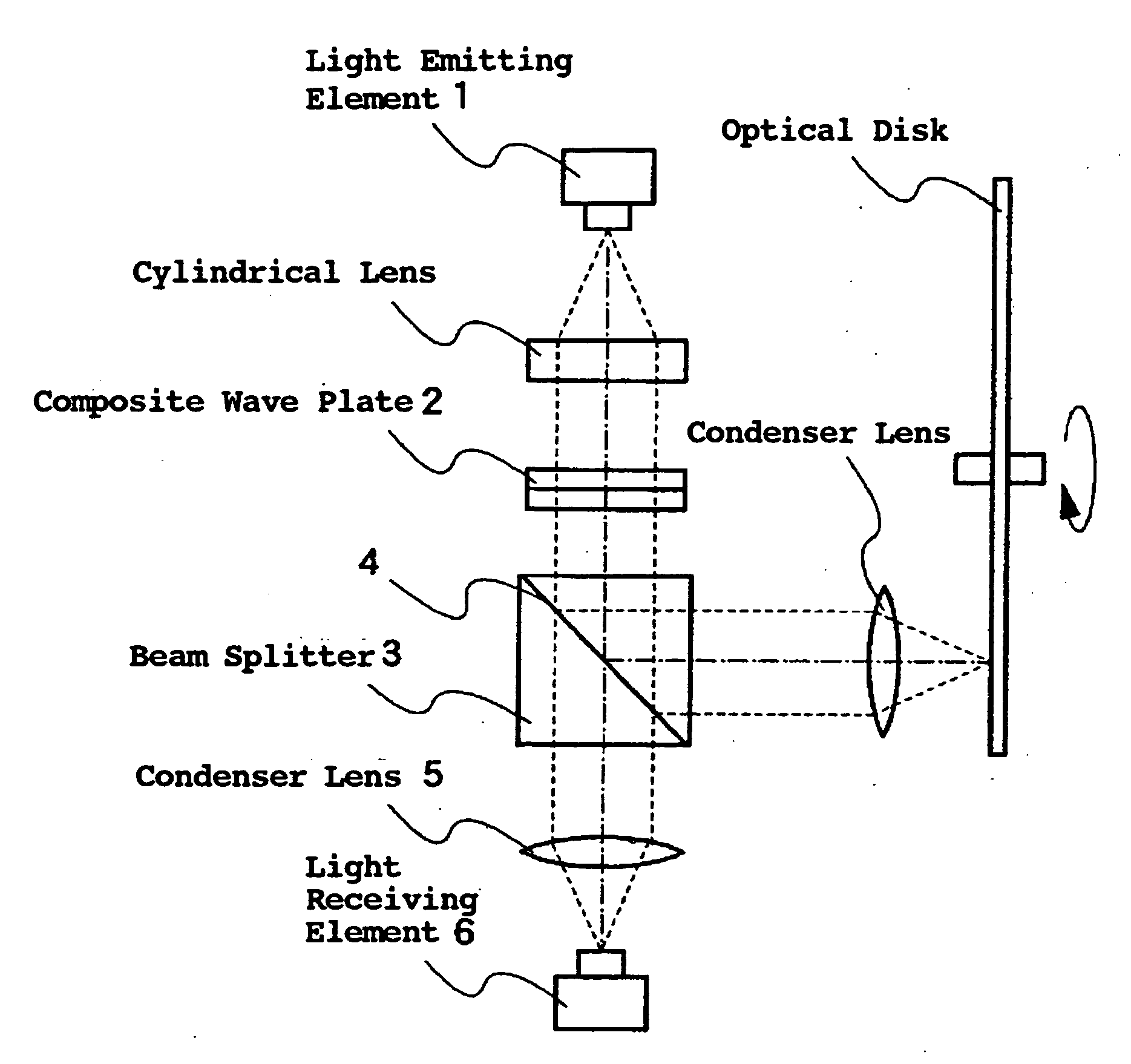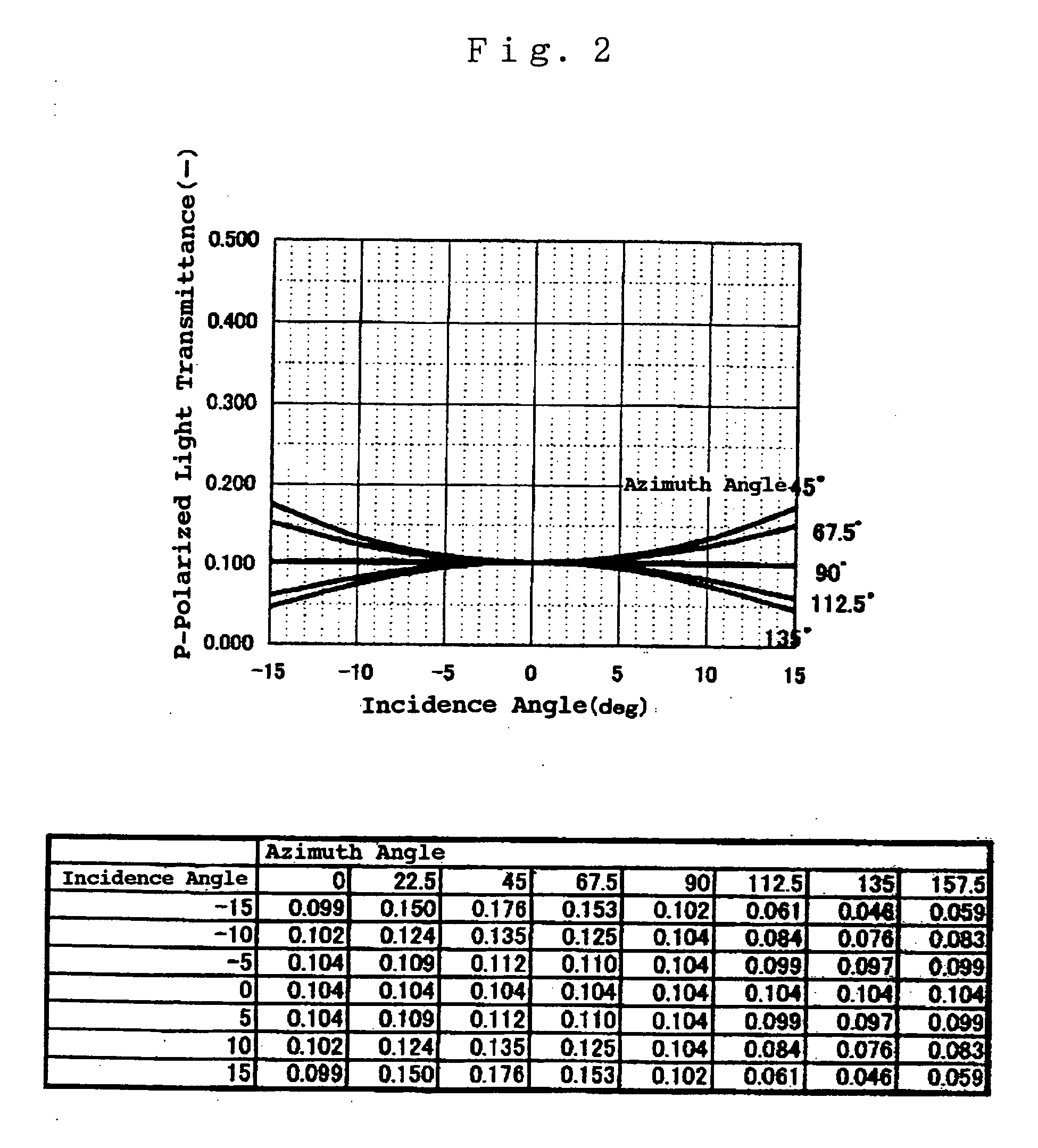Compositive wave plate
a composite wave plate and wave plate technology, applied in the field of wave plates, can solve the problems of direct incidence of divergent light on the phase shift problem of the composite wave plate, and the long front monitor
- Summary
- Abstract
- Description
- Claims
- Application Information
AI Technical Summary
Problems solved by technology
Method used
Image
Examples
first embodiment
[0031]FIG. 1 illustrates the structure of a composite wave plate according to the present invention, FIG. 1(a) being a plan view of the composite wave plate as viewed from the direction of incidence of light thereon, and FIG. 1(b) being a table showing the differences in the azimuth angle and phase between the first and second wave plates to be laminated. FIG. 2 shows the dependence of the composite wave plate on incidence angle, from which it can be seen that variations in the transmittance of the P-polarized light with the incidence angle of divergent light has been sharply improved as compared with the incidence angle dependence in the prior art described in FIG. 11.
second embodiment
[0032]FIG. 3 illustrates the structure of a composite wave plate according to the present invention, FIG. 3(a) being a plan view of the composite wave plate as viewed from the direction of incidence of light thereon, and FIG. 3(b) being a table showing the differences in the azimuth angle and phase between the first and second wave plates to be laminated. FIG. 4 shows the dependence of the composite wave plate on incidence angle, from which it can be seen that variations in the transmittance of the P-polarized light with the incidence angle of divergent light has been sharply improved as compared with the incidence angle dependence in the prior art described in FIG. 11.
[0033] The inventor of this application hit upon an idea that he composite wave plates of the first and second embodiment of the present invention could be computed by mathematical calculations based on the conditional expression described below.
[0034] Next, the optical operation of the composite wave plate according...
PUM
 Login to View More
Login to View More Abstract
Description
Claims
Application Information
 Login to View More
Login to View More - R&D
- Intellectual Property
- Life Sciences
- Materials
- Tech Scout
- Unparalleled Data Quality
- Higher Quality Content
- 60% Fewer Hallucinations
Browse by: Latest US Patents, China's latest patents, Technical Efficacy Thesaurus, Application Domain, Technology Topic, Popular Technical Reports.
© 2025 PatSnap. All rights reserved.Legal|Privacy policy|Modern Slavery Act Transparency Statement|Sitemap|About US| Contact US: help@patsnap.com



